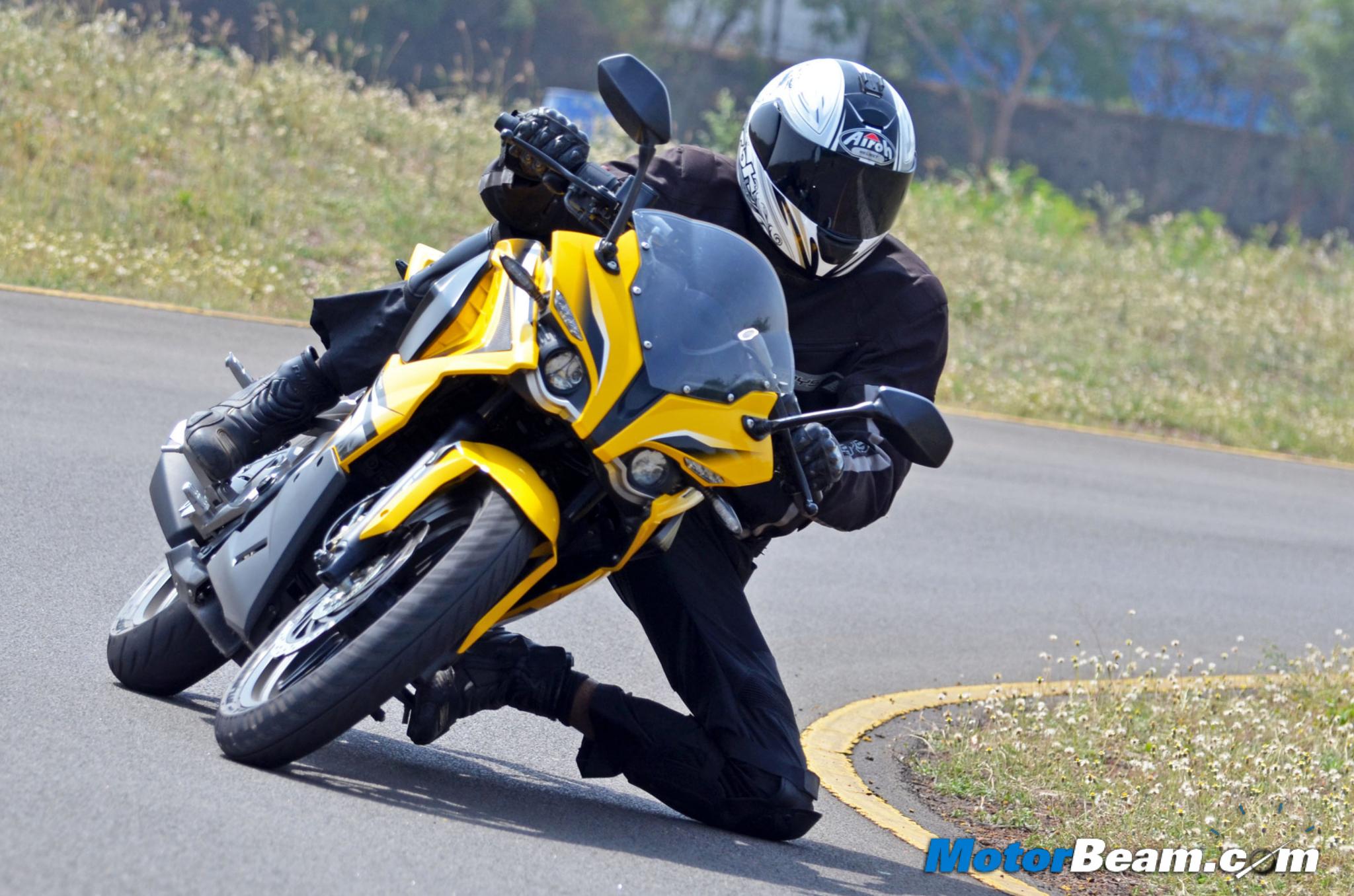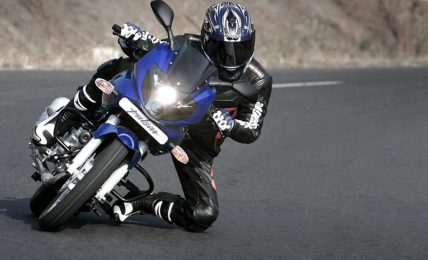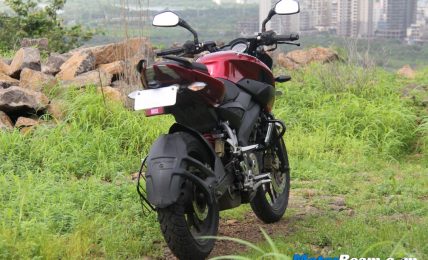Relaxed riding position of the Pulsar 150 doesn’t hamper control over the motorcycle
Ergonomics – The Pulsar 150 is, and has been, at the top when it comes to seating position and ergonomics. So, it was quite natural for Bajaj to leave this department untouched. Wide clip-on handlebars not only enhance the visual appeal but also help in a sporty leaned-in position for the rider. However, the position isn’t very dedicated and won’t hurt your wrists in stop-go traffic. The footpegs and seat are aptly set to provide a relaxed and upright posture. Even tall riders won’t feel cramped astride the Pulsar 150 as the single-piece seat offers a lot of room to move around. Ergonomically, the Pulsar 150 is quite sorted with all the controls falling right in place. For the pillion also, the seat is quite comfortable and the black grab rail feels pretty sturdy. Lastly, the rearview mirrors are sufficiently wide and function well.
Refinement levels have gone up considerably but aren’t in the league of its Japanese rivals
Performance – The Pulsar series, since 2001, has been known for the adrenaline rush that comes bundled with the motorcycles. Achieving this status was no easy task and the company practised the principle of bumping up the power figures with every successive generation. However, with no dearth of performance-oriented choices (case in point, the NS 160) this time, Bajaj has tuned the motor for tractability rather than outright performance. Power figures have gone down by around 1 BHP while peak torque has seen an increment of 1 Nm. With this iteration, Bajaj has also made its 149cc air-cooled DTS-i motor compliant to BS4 norms.
Bajaj has reduced the engine’s bore and increased the stroke for better low-end performance
Among other tweaks, a revised exhaust system, larger cat-con, new engine mounts, SAI and an EVAP system have helped this Pulsar slip through the BS4 barrier. The low-end performance shows a marked improvement and the carburetted motor is quick to respond to throttle inputs. Part of the credit also goes to the improved CDI unit which now uses five maps instead of two. Mid-range continues to be as strong as the previous version but the lack of punch near the redline is bothersome. Refinement has seen a tremendous improvement and the inherent rasp of the Pulsar 150 motor is nowhere to be seen.
A larger muffler and revised exhaust system ensures that the Pulsar 150 sounds a lot smoother than before
The 2017 Pulsar 150 boasts of an improved low-end and strong mid-range
While top speed (110 km/hr) and outright acceleration figures aren’t mind-boggling, the Pulsar 150 packs a serious punch in the mid-range and has good in-gear acceleration. Coupled with fuel efficiency figures of around 50 kms to a litre, the Pulsar 150 is good to go for 750 kms on a single tank of fuel! With the changed engine characteristics, riding the motorcycle in traffic is where the motorcycle feels at home. In addition to that, Bajaj has worked on the transmission to ensure a progressive clutch action and crisp gear changes.




